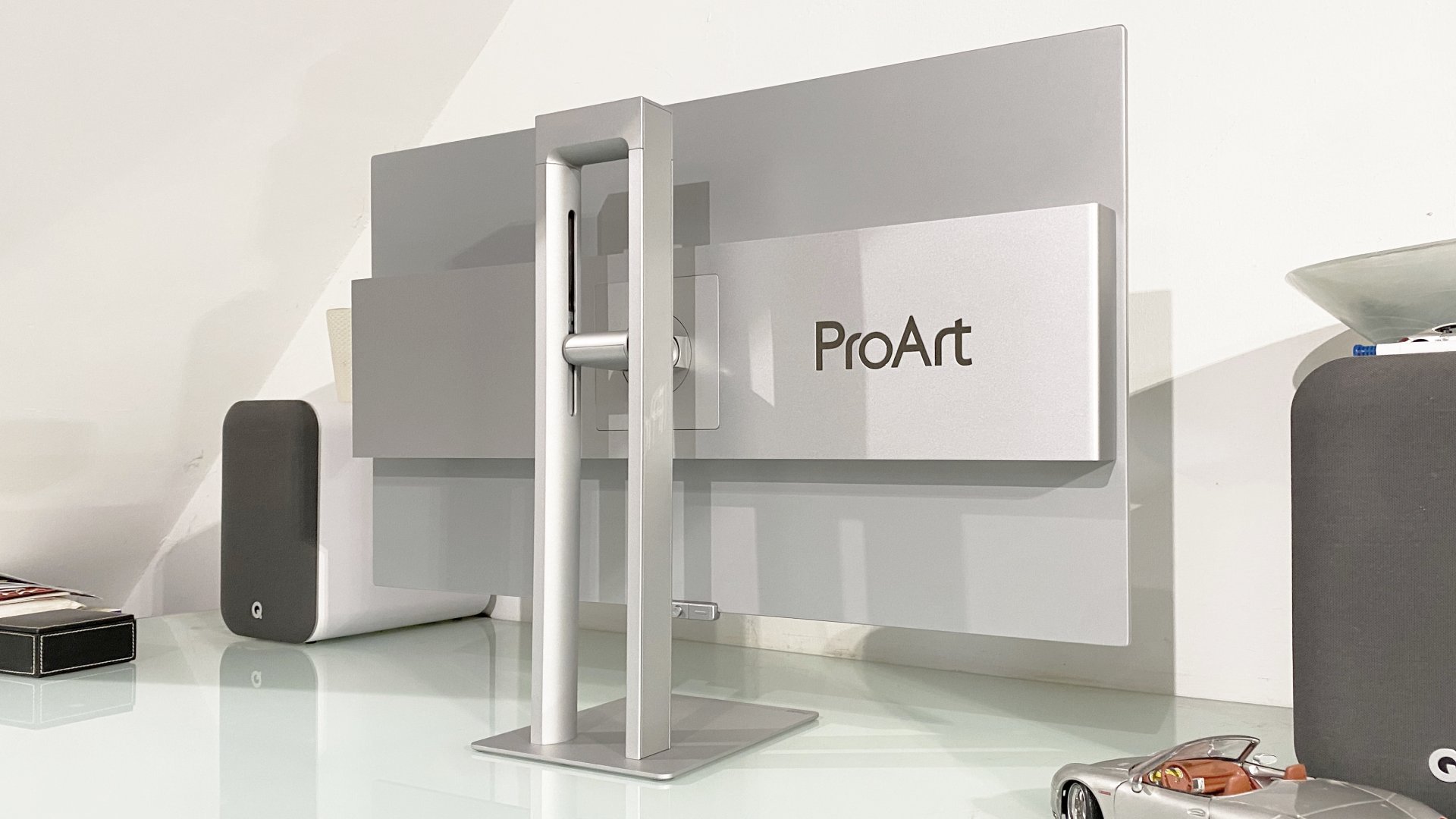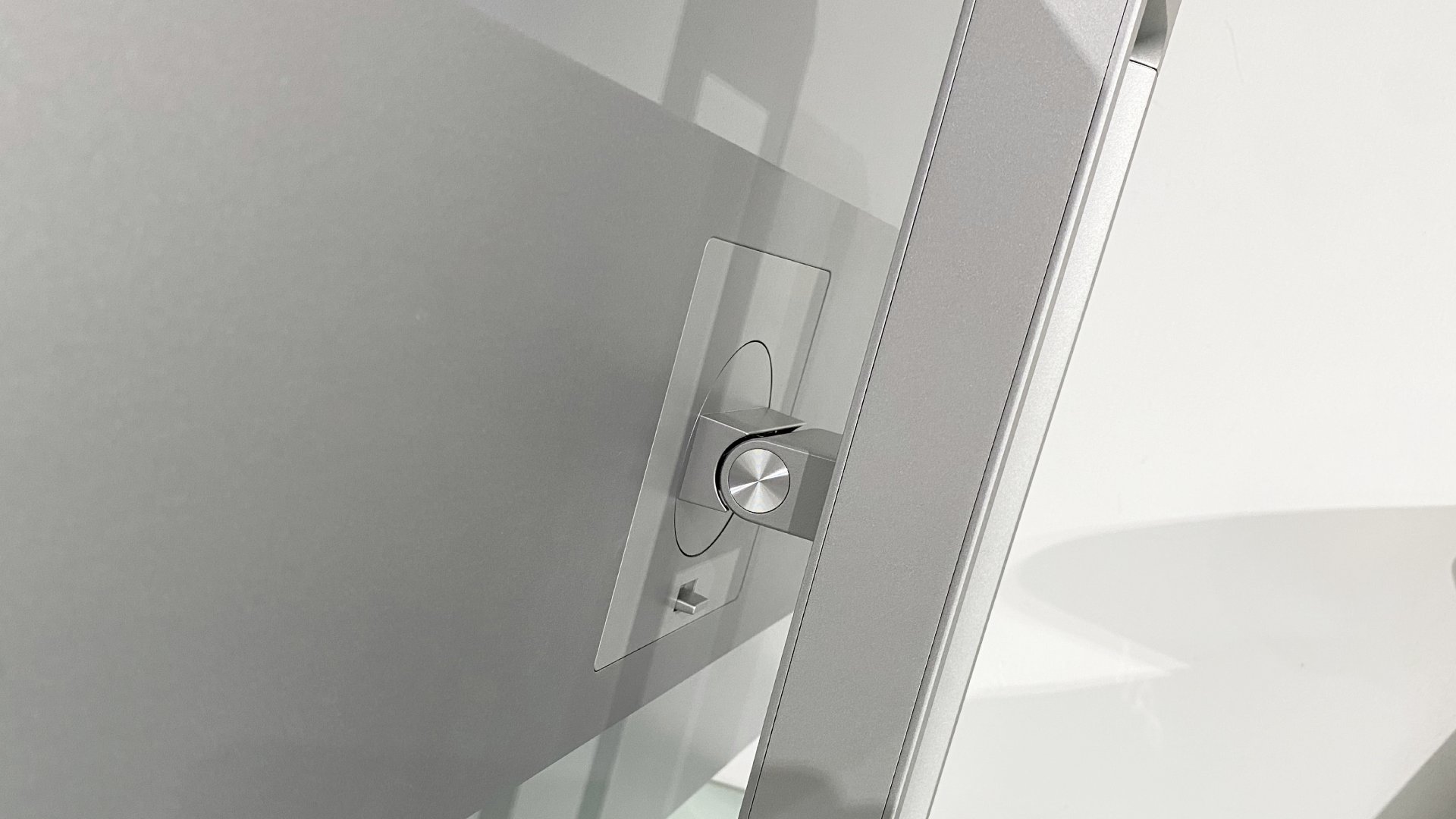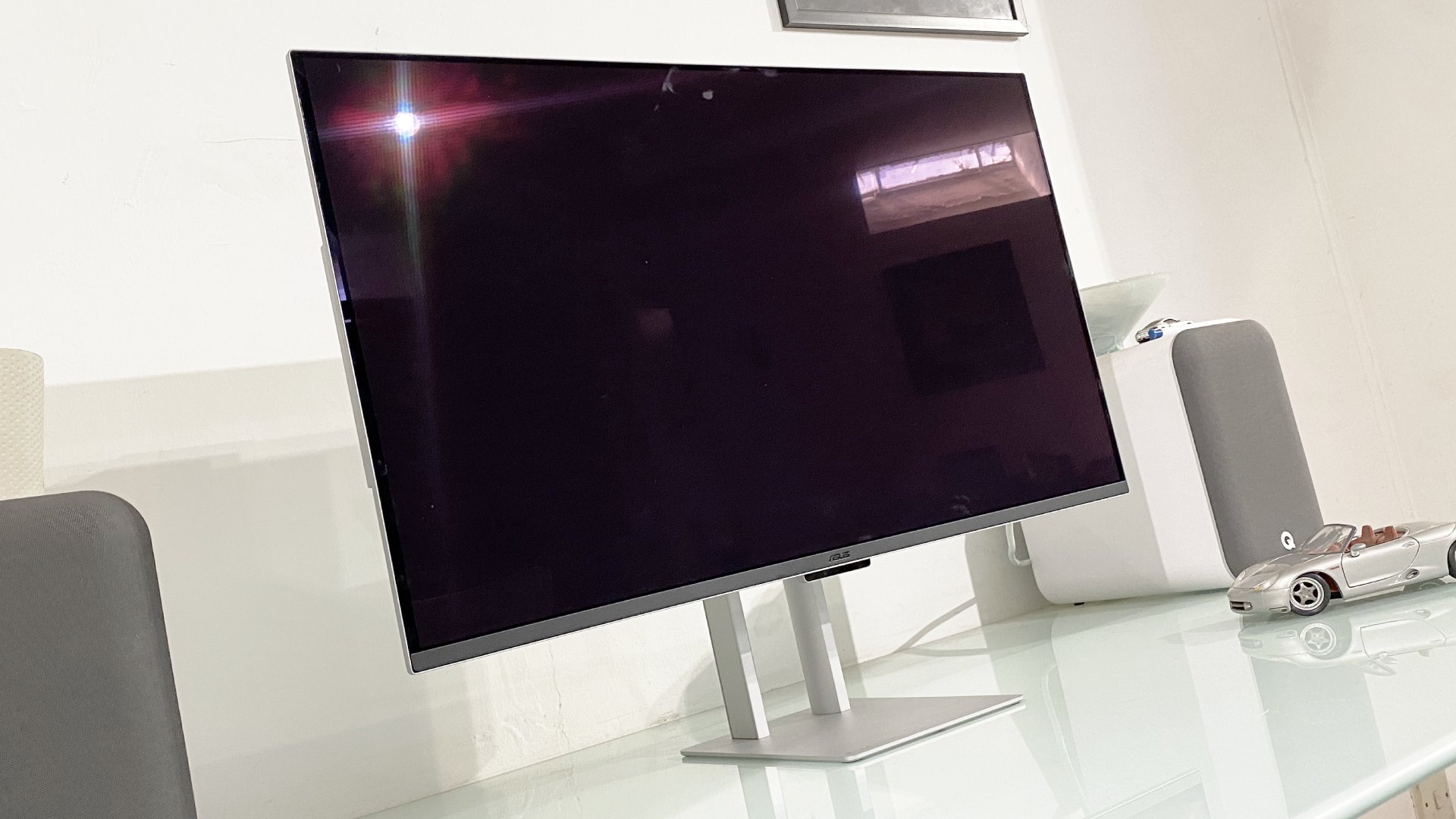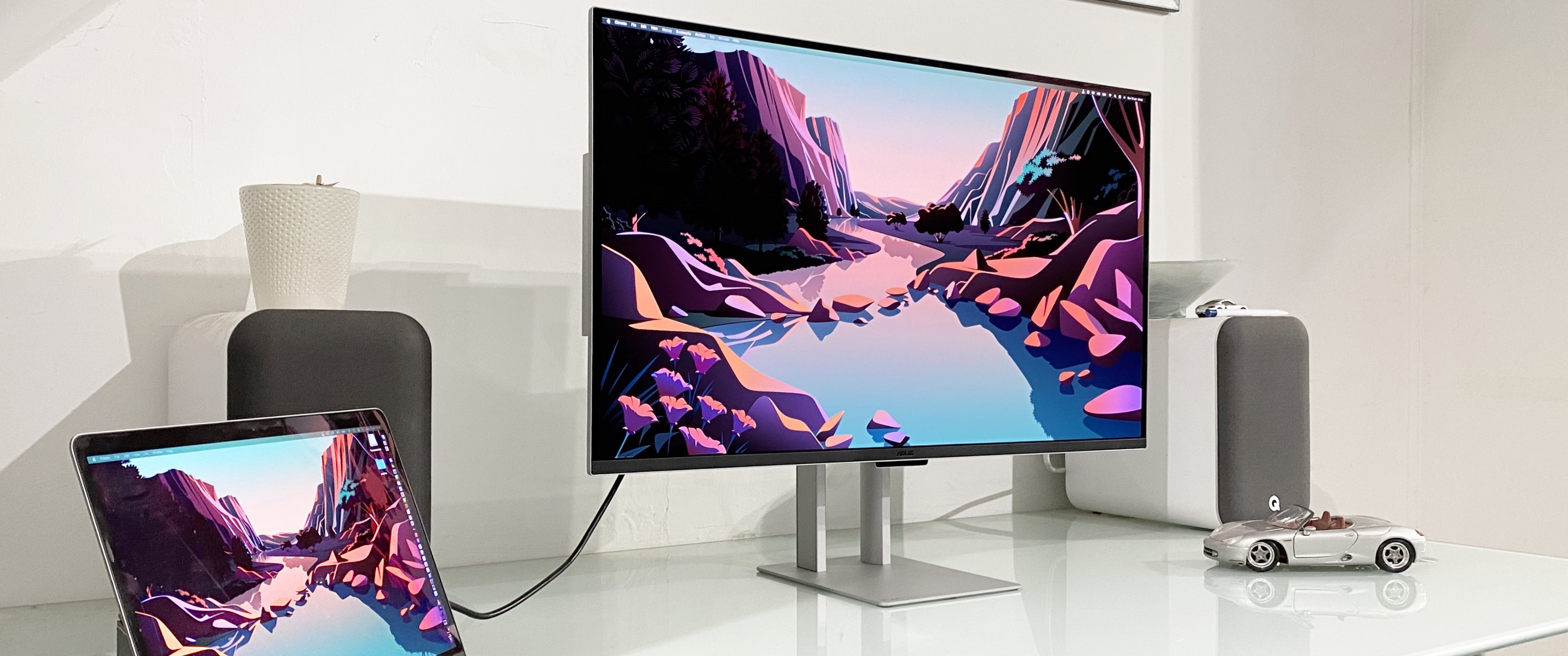Our Verdict
At last, ASUS brings us an OLED panel for creative pros with the ASUS ProArt PA32UCDM. The benefits are perfect per-pixel lighting, eye-popping HDR highlights and excellent colour coverage. The downsides? OLED technology still has limitations, including full-screen brightness and the possibility of burn-in, the risk of the latter being low but hard to totally exclude.
For
- Stunning HDR highs
- Perfect per-pixel lighting
- Great features for pros
Against
- Usual OLED limitations
- No DisplayPort input
- Calibration could be better
Why you can trust Creative Bloq
Rejoice, for creative pros no longer have to watch jealously as TV fans and PC gamers enjoy the benefits of OLED technology. It's finally entering the mainstream market for displays aimed at professionals and creatives. The new ASUS ProArt PA32UCDM is among the first such OLED panels for creatives.
OK, it's not exactly cheap at around $1,899 or £1,599. But that's not outrageous money. Notably, it's miles more affordable than a $4,999 Apple Pro Display. And that's without a stand. So, it's an interesting alternative to our pick of the best monitors for MacBook Pro users.
So, what are the main benefits of OLED for creative workflows? Most obviously, perfect per-pixel lighting and the ability, albeit with some limitations, to deliver a true HDR experience. Wider colour coverage is highly relevant, too. Much faster pixel response is another upside, albeit arguably more tangential.
What about the downsides? Well, full-screen brightness can be limited. Then there's the ever-present worry regarding OLED burn-in. All that said, the ASUS ProArt PA32UCDM also comes with the usual range of pro-friendly features you'd expect from a premium ASUS display, including Thunderbolt 4 connectivity, a comprehensive set of colour space presets and hardware calibration.
Key specifications
Screen size: | 32in |
Screen type: | QD-OLED |
Resolution: | 3840x2160 |
Max refresh rate: | 240Hz |
Connectivity: | HDMI 2.1, Thunderbolt 4 / USB-C in with 96W PD x2, USB hub |
Brightness: | 250 nits full-screen, 1,000 nits HDR |
Colour response: | 99% P3 |
HDR: | HD10, Dolby Vision |
Webcam: | No |
Speakers: | 2x 3W |
Adjustments: | +20º to -5º tilt; +/- 90° pivot; 130mm height |
Dimensions: | 717mm x 228mm x 603mm |
Weight: | 9kg (with stand) |
Design and features

• Slick styling and engineering
• Connectivity isn't comprehensive
OLED monitors have been available for PC gamers for several years now. Thanks to their broader capabilities, many gaming-centric models could actually stand in pretty well as displays for creative pros.
But one reason why you might pass is the adolescent design vibe of gaming panels, festooned as they often are with RGB lighting and other styling distractions. Well, not here. ASUS has started with its usual ProArt minimalism, and then ramped the quality and engineering up a notch.
Daily design news, reviews, how-tos and more, as picked by the editors.
Compared to cheaper monitors, the build quality is excellent, even if it's not quite up there with Apple's displays in that regard, despite an adjustable hinge with height, tilt and rotation into portrait mode adjustment that apes that of Apple's Pro Display XDR.
For the most part, connectivity is also a strong point, thanks to dual Thunderbolt 4 ports with support for display daisy chaining and 96W of power delivery, along with an HDMI 2.1 port with 48Gbps bandwidth. However, there is no dedicated DisplayPort, just support for DisplayPort via Thunderbolt's DisplayPort alt mode.
That's not the end of the world. But at this price point, it would still have been preferable for ASUS to stick in a dedicated port. The USB hub, meanwhile, is limited to one USB-A and one USB-C output and there's no 3.5mm audio out at all.
Along with the specifications of the OLED panel itself, which we'll come to, you also get Dolby Vision support, 10-bit per channel colour, hardware calibration and various OLED panel protection features to help mitigate burn-in.
Design score: 4/5
Performance

• At its best, HDR performance is stunning
• Factory calibration isn't perfect
The new ASUS ProArt PA32UCDM sports the same 32-inch 4K QD-OLED panel sourced from Samsung that has already been seen in various gaming monitors for over a year. So the basic technology is familiar.
That includes the 32-inch size and 4K resolution, which is obviously a great fit for all kinds of workflows in terms of desktop space and pixel density. Admittedly, 27-inch 4K panels and Apple's 6K Pro Display XDR have even better pixel density. But the ProArt PA32UCDM still offers good font rendering in both Windows and MacOS.
Of course, you can get 4K LCD monitors for far less money. The appeal here is that QD-OLED technology. At its best, this monitor is utterly stunning. The perfect per-pixel lighting of OLED means that small, bright details on dark backgrounds pop out of the panel with total precision and none of the light bleed or unwanted halos that come with various backlit-LCD alternatives.
The dynamism and vibrancy of colour rendering is spectacular, too. All of this is accentuated by the glossy panel coating, which heightens the sense of perceived contrast. This monitor really sizzles with HDR content.
Of course, it has limitations too. Some of those apply to all current OLED monitors, including limited full-screen brightness that tops out at around 250 nits. For many pro workflows, that's just fine. But it does mean this display struggles to render really bright full-screen content and may not be ideal for use in environments with bright ambient light.
Speaking of which, the inherent characteristics of "QD" or quantum dot technology Samsung uses for its OLED panels mean that the panel can look slightly grey in really bright ambient light. It's not a major problem, and for most working environments with normal light levels, it won't be an issue at all.
ASUS's factory calibration isn't quite as good as it could be, either. At factory settings, it's a touch over-saturated and also very slightly crushes some shadow details. That can be overcome with calibration, which is well catered for courtesy of a hardware 3D LUT, ASUS's own ProArt calibration and support for third-party calibration tools, including Calman Autocal. But the out-of-the-box experience could be a little better in that regard.
For the record, this is a super quick display, too, with 240Hz refresh and 0.1ms response. While not designed expressly for gaming, then, it's basically on par with dedicated gaming monitors by those metrics.
Features and performance score: 4/5
Price

At $1,899 or £1,599 in the UK, this is an expensive display. But it's not exotically priced in the context of pro displays, especially given the HDR capabilities and colour coverage. But it does have limitations and you'll need to be sure the benefits over a much chdaper IPS monitor make. sense for your workflows.
Value score: 3.5/5
Who is it for?
• Creatives who have been waiting for OLED for years
OLED technology isn't perfect. But it can do things when it comes to lighting control and HDR that LCD monitors can only dream of. Add in a pro-friendly feature set, and you have a compelling early example of what OLED display technology is going to bring to creative workflows.
Attributes | Notes | Rating |
|---|---|---|
Design and features: | Well built and mostly good features | 4/5 |
Performance: | Stunning HDR highs, albeit with limitations | 4/5 |
Value: | Not exactly cheap, but possibly worth it | 3.5/5 |
Buy it if...

- You want to experience true HDR visuals
- You've been waiting for an OLED monitor aimed at pros
Don't buy it if...
- You need strong full-screen brightness
- You want maximum value for money
out of 10
At last, ASUS brings us an OLED panel for creative pros with the ASUS ProArt PA32UCDM. The benefits are perfect per-pixel lighting, eye-popping HDR highlights and excellent colour coverage. The downsides? OLED technology still has limitations, including full-screen brightness and the possibility of burn-in, the risk of the latter being low but hard to totally exclude.

Jeremy has been writing about technology since the 90nm Netburst era (Google it!) and enjoys nothing more than a serious dissertation on the finer points of input lag and overshoot followed by a forensic examination of advanced lithography. Or maybe he just loves machines that go 'ping!'. He has written for a variety of publications, including TechRadar, The Independent, Digital Camera World, T3, PC Gamer, GamesRadar+.
You must confirm your public display name before commenting
Please logout and then login again, you will then be prompted to enter your display name.

